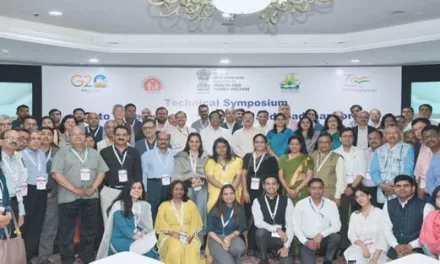MINNEAPOLIS, MN – Five years after the onset of the COVID-19 pandemic, thousands of Minnesotans continue to grapple with the debilitating effects of long COVID, a condition that remains shrouded in medical mystery. While millions recovered from acute COVID-19 infections, a significant portion of the population has been left with persistent and often severe symptoms, impacting their daily lives and the state’s healthcare system.
The exact causes of long COVID remain elusive, with several theories under investigation. Some researchers speculate that the virus may reactivate dormant viruses within the body, while others suggest that lingering viral particles or lasting organ damage may be responsible. An overactive immune response is also considered a potential factor.
Dr. Amy Engebretson, a former OB-GYN, is among those personally affected by long COVID. A routine COVID-19 infection in March 2020 left her with debilitating fatigue, forcing her to abandon her medical practice. Years later, she still requires extensive rest, highlighting the profound impact of the condition. “I’m still really nowhere near the person that I was,” she said.
Long COVID has emerged as a significant public health challenge in Minnesota, affecting the state’s workforce and healthcare infrastructure. Federal surveys have provided varying estimates of the prevalence of long COVID in the state. A 2023 survey suggested approximately 385,000 Minnesota adults experienced the condition, while a later estimate placed the figure closer to 700,000. Of those, it is estimated that as many as 50,000 continue to experience significant impairments.
Dr. Stephanie Grach, a clinician specializing in post-COVID cases at Mayo Clinic, notes that her patient population mirrors national trends, with disproportionate numbers of minorities, middle-aged adults, and women. Interestingly, long COVID has been less frequently diagnosed in seniors, despite their higher rates of COVID-19 hospitalization and death.
Research indicates that severe COVID-19 infections increase the risk of developing long COVID, but many cases arise from individuals who experienced mild initial infections. The Centers for Disease Control and Prevention (CDC) recommends vaccination to reduce risks, although Mayo Clinic research has found that vaccines do not reduce the likelihood of a long COVID diagnosis.
Symptoms of long COVID, as defined by federal guidelines, can manifest immediately after infection or emerge later. These symptoms can fluctuate or progressively worsen. A recent state survey revealed that fatigue, shortness of breath, and cognitive dysfunction (“brain fog”) are common among Minnesotans with long COVID.
A significant portion of long COVID cases, estimated between 5% and 50%, progress to myalgic encephalomyelitis/chronic fatigue syndrome (ME/CFS), a debilitating condition characterized by severe exhaustion.
Ongoing research efforts are focused on unraveling the biological mechanisms underlying long COVID. Studies have indicated that COVID-19 can interfere with blood clotting proteins, reactivate latent viruses, and disrupt gut bacteria. Additionally, an overactive immune response is believed to play a role.
The federally funded Recover project, involving institutions like Sanford Health, is collecting observational data on long COVID. However, some advocates express concerns about the pace of research and the limited number of clinical trials for potential treatments. Recent budget cuts have further fueled these concerns.
Current treatment strategies primarily focus on symptom management. Medications such as dexamethasone and guanfacine are used to alleviate inflammation and cognitive dysfunction, respectively. Physical therapy and tailored exercise regimens are also employed to help patients manage their energy levels.
While antiviral medications like Paxlovid were initially hoped to be effective against long COVID, studies have yielded inconclusive results.
“We are five years into this health disaster. … Research is not moving fast enough for the millions suffering,” said Billy Hanlon, an advocacy director for the Minnesota ME/CFS Alliance.
Disclaimer: This article is based on information available at the time of publication. Medical research is ongoing, and findings may evolve. The information presented here should not be considered medical advice. Consult with a healthcare professional for diagnosis and treatment of any medical condition.












